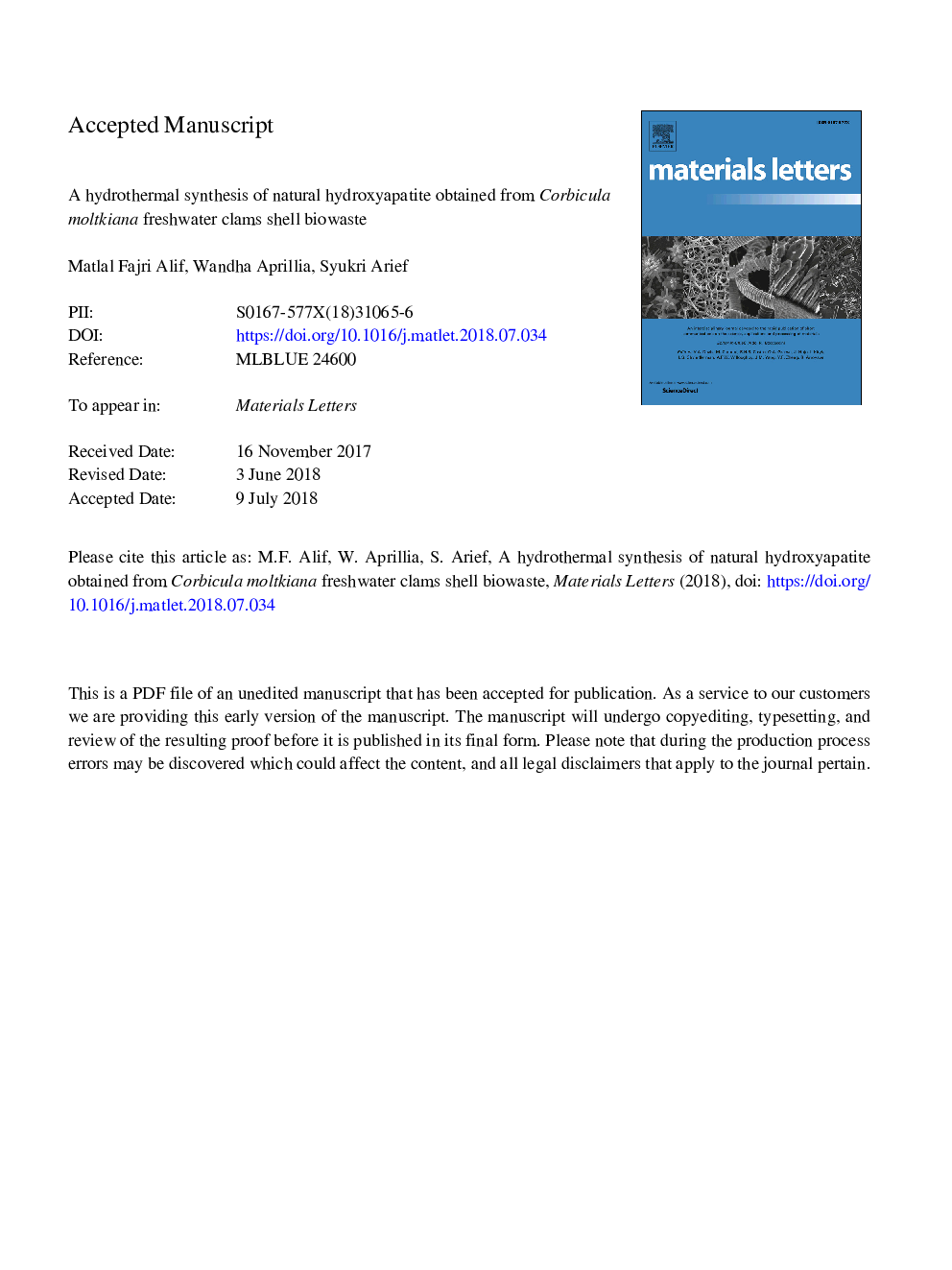| Article ID | Journal | Published Year | Pages | File Type |
|---|---|---|---|---|
| 8012349 | Materials Letters | 2018 | 14 Pages |
Abstract
In this study, the natural hydroxyapatite (HA) has been obtained from Corbicula moltkiana shell (CS), which are available as waste from local food processing. The shell can be used as an inexpensive source of natural HA providing at the same time to give added value to food processing by-products as well as reducing the undesirable environmental impact. The synthesized natural HA have been characterized by X-ray diffraction (XRD), Fourier-transform infrared spectroscopy (FT-IR), X-ray Fluorescence (XRF) spectrometer and transmission electron microscopy (TEM) studies. The XRD peaks were in agreement with the standard JCPDS file (ICSD-157481). The material obtained at 900 and 1000â¯Â°C (HA 900 and HA 1000) have a low crystallinity of hydroxyapatite. At 1000â¯Â°C, a tetracalcium phosphate (TTCP) peak was observed. In addition, the crystal size of HA calculated from XRD pattern was found to be a nanosized crystal of 28.90â¯nm and 6.31â¯nm for HA 1000 and HA 900 respectively.
Related Topics
Physical Sciences and Engineering
Materials Science
Nanotechnology
Authors
Matlal Fajri Alif, Wandha Aprillia, Syukri Arief,
